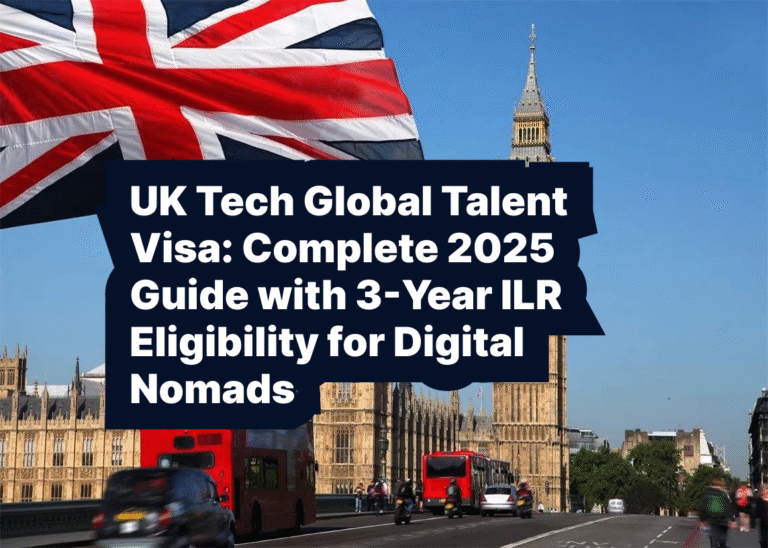The United States of America has long been a destination for individuals from all over the world seeking new opportunities and a better life. A unique and highly sought-after pathway to a U.S. green card is the Diversity Visa (DV) program, often referred to as the “green card lottery.” This program is designed to diversify the immigrant population by issuing up to 55,000 immigrant visas each year to individuals from countries with historically low rates of immigration to the United States. For many, it represents a life-changing opportunity to gain lawful permanent resident status, with all the rights and privileges that come with it.
This article is an exhaustive guide that will walk you through every stage of the Diversity Visa process for 2025. From the initial eligibility requirements to the meticulous application process, checking your approval status, and navigating the complex steps after being selected, we will provide a detailed roadmap for your journey. We will delve into common pitfalls, offer critical tips for success, and provide a comprehensive blueprint for what to expect as a new immigrant settling into life in the United States. This guide is your definitive resource for turning the dream of living and working in America into a tangible reality.
Understanding the Diversity Visa Program and Eligibility
The Diversity Visa program is a lottery-based system, meaning that winning a green card is a matter of luck. However, a successful application is a matter of precision and preparation. The program is administered annually by the U.S. Department of State, and each year a registration period is announced, typically in the fall.
Eligibility by Country of Birth
The most important and non-negotiable eligibility criterion is your country of birth. The U.S. government maintains a list of eligible countries for each fiscal year’s lottery. Countries with high rates of immigration to the U.S. are excluded from the list. The list of eligible countries is updated annually, so it is crucial to check the official instructions for the specific year you are applying. The list is based on the total number of immigrants from a country in the previous five years. This criterion is the cornerstone of the entire program, and your application will be immediately disqualified if your country of birth is on the ineligible list.
There are, however, two important exceptions to this rule:
- Derivative Eligibility: If your spouse was born in an eligible country, you may be able to claim eligibility through their country of birth, provided you and your spouse are issued visas and enter the U.S. at the same time. This is a common strategy for couples where one spouse is from a country on the ineligible list.
- Country of Parent’s Birth: If you were born in an ineligible country but neither of your parents was a legal resident there at the time of your birth, you may be able to claim eligibility through the country of birth of either of your parents. This is a nuanced rule that applies in very specific circumstances, such as when your parents were only temporarily visiting or residing in the ineligible country for a short period of time.
Education and Work Experience Requirements
In addition to the country of birth requirement, you must meet one of two strict educational or work experience criteria. It is not enough to simply have your name drawn in the lottery; you must be able to prove that you meet one of these two standards.
- High School Education or Equivalent: You must have a U.S. high school education or its equivalent. This is defined as the successful completion of a formal course of elementary and secondary education, comparable to a 12-year course of study in the United States. This means you must have completed the equivalent of a high school degree in your home country. This criterion is straightforward to prove and is the most common way to qualify for the program. The key is that the education must have been completed, and you must have received a diploma or certificate to prove it.
- Work Experience: Alternatively, you must have two years of work experience within the last five years in an occupation that requires at least two years of training or experience to perform. The U.S. Department of Labor’s O*Net Online database is used to determine which occupations qualify. This database is a comprehensive source of information on job titles, skill requirements, and educational prerequisites, and it is a critical tool for verifying if your work experience meets the standards. For an occupation to qualify, it must be designated in a specific job zone, with a Special Vocational Preparation (SVP) rating of 7.0 or higher. This means that the job must require at least two years of specialized training, on-the-job experience, or both. This is a more complex criterion to meet and prove, so if you are relying on work experience, you must be prepared to provide detailed documentation, such as letters from previous employers.
It is absolutely essential that you meet one of these two requirements, as failure to do so will result in the denial of your visa, even if you are selected in the lottery.
Step-by-Step Guide to the Application
The Diversity Visa application process is a single, online submission during the specified registration period. This is the only chance to apply, and accuracy is paramount. The application form is known as the DS-5501, and it is submitted electronically.
Step 1: Gather Your Information and Documents
Before you begin the online application, gather all the necessary information and documents to ensure a seamless and accurate submission.
- Personal Information: You will need your full legal name as it appears on your passport, date of birth, place of birth, and country of birth. Every detail must match your official travel documents exactly. A single typo can lead to a visa denial later in the process.
- Spouse and Children: You must list your spouse and all unmarried children under the age of 21 at the time of the application. This is mandatory, even if they do not plan to immigrate with you. Failure to include a spouse or eligible children is a common reason for visa denial. This rule is in place to prevent fraud and to ensure that all family members who could potentially immigrate under the diversity visa program are properly vetted. You must also include information on children who are no longer living at home or who have been born to a previous partner.
- Mailing Address and Contact Information: A reliable mailing address and email address are required for any correspondence. The email address is crucial for receiving notifications and updates.
- Photo: A digital photo of yourself, your spouse, and all listed children is a mandatory part of the application. The photo must meet very specific technical and compositional requirements. It must be in colour, in focus, taken against a plain white or off-white background, and taken within the last six months. The head must be between 50% and 69% of the total height of the image, and glasses are not permitted. A non-compliant photo is a common cause of disqualification. It is highly recommended to use a professional photo service that is familiar with U.S. visa photo requirements to ensure your photo is perfect.
Step 2: Complete the Online Application (Form DS-5501)
The application is a single online form that must be completed and submitted within the registration period.30
- Access the Website: The application is only available on the official U.S. Department of State website. You should be extremely cautious of fraudulent websites that may try to charge you a fee to apply. The official application is free. The website is only active for submissions during the specific registration period each year.
- Fill in the Form: The form will guide you through a series of questions, from your personal information to your educational and marital status. You must answer each question truthfully and accurately. Do not leave any required fields blank. The form will also ask about your parents and other family members, and you must provide all the requested information.
- Upload Photos: You will be prompted to upload the digital photos for yourself and your family members. The system will automatically check if the photo meets the size and pixel requirements, but it will not check if the content of the photo (e.g., plain background, no shadows) is correct.
- Review and Submit: Before final submission, you will have a chance to review all the information you have entered. This is a critical step to catch any typos or errors. Once submitted, you cannot make any changes.
Step 3: Save Your Confirmation Number
After you successfully submit your application, you will be given a confirmation number. This number is your only way to check your status later. It is absolutely essential that you save this number securely. Print the confirmation page, take a screenshot, and email it to yourself. Without this number, you cannot check if you have been selected. You will need this number for every step of the process after you apply.
Checking Your Approval Status
Winning the Diversity Visa lottery is not the final step; it is merely the first. The results are typically released in May of the following year.
The Entrant Status Check
The only way to check your status is through the Entrant Status Check tool on the official U.S. Department of State website. You will need your confirmation number, your last name, and your year of birth to access the tool. This is a secure system, and you will not receive a notification by email or by mail if you are selected. You must proactively check the website yourself.
- If You Are Not Selected: A message will appear stating that you have not been selected.
- If You Are Selected: A letter will appear congratulating you on your selection. This letter will provide you with further instructions on how to proceed. It will also give you a case number. This selection notice is the only notification you will receive, and it is your key to moving forward.
It is important to understand that winning the lottery does not guarantee a visa. It simply allows you to proceed with the next stages of the application process.
The Visa Bulletin and Case Numbers
The visa issuance process is a time-sensitive race. The U.S. government allocates visa numbers based on regional limits, and visas are issued on a first-come, first-served basis based on case numbers. The Visa Bulletin is a monthly publication from the Department of State that provides an up-to-date schedule of when applicants with specific case numbers can proceed with their applications. It is crucial to monitor this bulletin closely to know when your case number becomes “current” and you can move on to the next step. If you do not submit your application and attend your interview before your case number becomes current, you may miss your chance to be issued a visa.
The Post-Lottery Process: A Detailed Guide
After receiving your selection notice, a series of complex and time-sensitive steps must be completed. This is where the real work begins, and a single mistake can lead to a visa denial.
Step 1: Complete and Submit Form DS-260
The first major task is to complete the immigrant visa and alien registration application, known as Form DS-260. This is a detailed online form that requires extensive personal, family, and professional information. It is crucial that all the information you provide on this form is consistent with your initial lottery entry. Any discrepancies could lead to a visa denial. This form is much more comprehensive than the initial lottery entry form and requires you to provide details on your educational history, work experience, previous addresses, and family members. It is a legally binding document, so accuracy is paramount.
Step 2: The National Visa Center (NVC)
After you submit your DS-260, your case will be sent to the National Visa Center (NVC). The NVC will review your application and documents. They will send you a list of required documents, including:
- Passport bio-data page.
- Birth certificates.
- Marriage and divorce certificates.
- Police certificates from any country you have lived in for more than six months since the age of 16.
- Military records (if applicable).
- Educational and professional qualification certificates.
You will need to scan and upload these documents to the NVC portal. The NVC’s review process can take several weeks or months. It is important to submit all the requested documents as soon as possible to avoid delays. The NVC will not schedule your interview until all your documents are in order and your case number becomes current.
Step 3: The Medical Examination
Once your documents are approved by the NVC and your case number becomes current, you will be scheduled for a mandatory medical examination with a U.S. government-approved physician in your country. The medical exam will include a physical examination, a review of your medical history, and a blood test for certain communicable diseases, such as tuberculosis and syphilis. Your vaccination records will also be checked, and you will be required to get any vaccinations you are missing. The doctor will provide you with a sealed envelope containing your medical report, which you must bring unopened to your visa interview.
Step 4: The Visa Interview
The final and most important step is the visa interview at the U.S. embassy or consulate.
- Preparation: Prepare for your interview by reviewing all your documents and practice answering questions about your background, family, and your plans in the United States. Be ready to explain how you meet the education or work experience requirements.
- The Interview: The interview is a formal process where a consular officer will verify all the information in your application. They will ask you questions to ensure that you are eligible for the visa and that your intentions are genuine.
- Visa Approval: If your visa is approved, the consular officer will stamp a visa in your passport. This visa is a temporary travel document that allows you to enter the United States.
Life in the United States: A Guide to Settling In
Your journey does not end with a visa stamp. Upon arrival in the U.S., a new chapter of administrative and social integration begins.
The First Few Weeks: The Essential Checklist
- Social Security Number (SSN): This is a critical nine-digit number that you will need for employment, banking, and government services. You can apply for an SSN at a Social Security Administration office after your arrival. You will need your passport, your visa, and your birth certificate to apply.
- Opening a Bank Account: Opening a U.S. bank account is essential for receiving your salary and managing your finances. You will need your passport, your visa, and your SSN.
- Driver’s License: A U.S. driver’s license is a primary form of identification and is necessary for driving. You will need to take a written test and a practical driving test to obtain one.
- Finding Housing: The U.S. rental market can be complex. You can use online platforms and real estate agents to find an apartment. Be sure to understand your lease agreement, as they can be complex.
- Employment: The U.S. job market is highly competitive. It is advisable to have a resume ready and to begin your job search as soon as you are settled.
Legal and Social Integration
- Understanding Labor Law: The U.S. has a robust set of labor laws that protect employees. Be aware of your rights regarding wages, working hours, and workplace safety.
- The U.S. Healthcare System: The U.S. healthcare system is different from many other countries. As a green card holder, you are eligible for certain public health benefits, but it is highly recommended to obtain private health insurance, which is often offered by employers.
- The Tax System: The U.S. tax system is complex, and you will be required to file taxes annually. It is a good idea to seek the advice of a tax professional to ensure you are complying with all the rules.
- Community and Social Life: The U.S. is a very diverse country. Don’t be afraid to get involved in local community groups, volunteer, or join clubs that align with your interests. This is an excellent way to meet people and build a support network.
The American Diversity Visa lottery for 2025 represents a unique and invaluable opportunity for individuals from around the world to achieve their dream of living and working in the United States. While the process is a lottery and the odds are long, a meticulous and well-prepared application is the only way to ensure your success if you are selected. By understanding the strict eligibility criteria, following the application guide precisely, and preparing for the intricate post-lottery steps, you can position yourself for a life-changing outcome. The journey to a green card is a test of patience and persistence, but for those who succeed, it is the first step toward a future filled with endless possibilities in the United States.







